The 15 Best White Wines to Buy in 2023
Get to know these game-changing white wines.

Liudmila Chernetska/Getty Images
This year, my interpretation of what makes a wine meaningful began to take on a whole new shape. Some wines are game-changing in the sense that they forever influence the way your mind and sense of taste experience the world, while others tangibly affect the greater good, and when we’re lucky, we find a select few at the intersection of both. Here are the 15 worth talking about in the coming year.
1. Frescobaldi Toscana Gorgona Bianco, 2020 (Gorgona, Italy)

Courtesy of Total Wine
A blend of vermentino and ansonica, the 2020 vintage of Gorgona’s idiosyncratic white wine bursts with freshness and just-ripe tropical fruits on the palate. The Tuscan archipelago’s sea breeze is ever-present, along with warm Mediterranean sun and brusque notes of wild flora ranging from rockrose to mastic bush. This wine has a delightfully round mouthfeel that’s tempered by bright, crisp acidity. And given the story behind the label — Gorgona is a penal colony and a handful of its inmates are actually working viticulturists and winemakers as part of the prison’s unique rehabilitation project with Italian wine giant Frescobaldi — it’s an investment you’ll feel good about in more ways than one.
2. Domaine Marie Bérénice 2021 Bandol Blanc (Bandol, France)

Courtesy of Domaine Marie Bérénice
Some of the greatest voices in wine right now come as a package deal — for years, I’ve looked to "Wine Girl" author and entrepreneuse Victoria James and her husband Lyle Railsback for the scoop on what to drink at any given moment. Earlier this year, I got wind of Railsback’s latest import endeavor, France+Western, a love letter to the “great unknown” of the world of fine wines. Currently, France+Western is championing a variety of independent growers across France and Italy including Domaine Marie Bérénice in Bandol, where winemaker Damien Roux is producing some of the appellation’s most interesting red, white, and rosé. The 2021 Bandol Blanc is a blend of clairette and ugni blanc from organically farmed older vines, and at less than $40, its delicate salinity and white flower–driven flavor profile make this complex yet easy-drinking wine an excellent value. If supporting small businesses is as important to you as buying delicious (and sustainably produced) wines full of personality, this is a fantastic place to start.
3. Les Lunes 2020 Barra Vineyard Chardonnay (Mendocino, California)
You’ve got to hand it to wine clubs — thoughtfully curated bottle subscriptions like Raw Wine Club can be a really fun way to discover wines you might not otherwise have come across on your own. For me, this was the case with Raw Wine founder Isabelle Legeron’s most recent selection, which featured an intriguing 2020 chardonnay by Shaunt Oungoulian and Diego Roig, the organic farmer-vintner duo behind Les Lunes and Populis. The 2020 Les Lunes Barra Vineyard Chardonnay showcases an awesome Mendocino County vintage from this single family-owned vineyard — the wine is soft and fresh with notes of lemon curd, toasted brioche, and pineapple, perfect for a variety of seafood dishes or even just a casual glass before dinner. You can join the Raw Wine Club to taste Legeron’s future picks — she is France’s first Master of Wine, after all — or shop the Les Lunes 2020 Barra Vineyard Chardonnay on its own from retail sites like Vivino.
4. Bidaia Txakolina Blanc (Basque, Spain)

Courtesy of Vinovore Eagle Rock
Ah, Txakoli — one of my all-time favorite Basque wines, known for its natural effervescence, citrus notes, and fresh acidity, often poured from high above the glass as a means of “waking it up.” I especially enjoy Bidaia winemaker Maria Hernandez’s quaffable Txakolina Blanc, which Vinovore — a Los Angeles wine retailer that champions female and minority winemakers — describes as “lean [and] linear” and “zippy like a wind-up toy on your tongue.” I couldn’t have said it better myself.
5. Stranger Wine Company 2021 Pinot Gris (Buchanan, Michigan)
Michigan winery Stranger Wine Company is one to watch, especially as the state’s relatively little-known wine scene is beginning to make its mark on the global wine community. Run by Master of Wine candidate Maxx Eichberg and his partner, Sidney, Stranger Wine Company just released its first vintage after purchasing Avonlea Estate in Buchanan last year, and currently on offer are a 2021 carbonic pinot noir and a rosé of pinot noir, as well as a cabernet franc and an excitingly crisp pinot gris. Give the latter a try if you’re interested in seeing a fresh, new take on Michigan winemaking — drink now or cellar for the next few years if you’ve got the patience.
6. Camins 2 Dreams Re:Generate Grüner Veltliner - Limited Edition Navajo Wine Project (Santa Barbara, California)
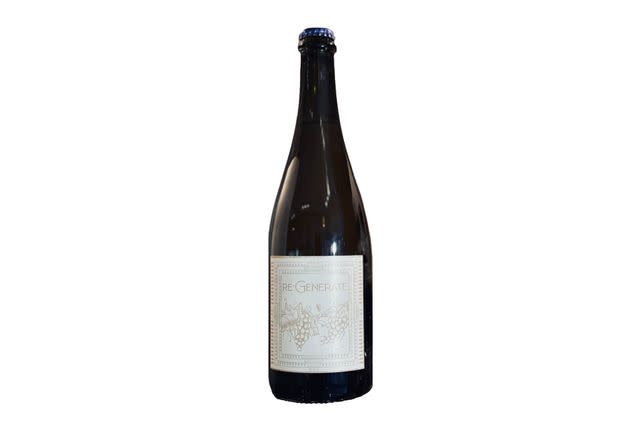
Courtesy of Vinovore Eagle Rock
Another great pick from Vinovore’s selection is the Camins 2 Dreams Re:Generate Grüner Veltliner, produced by natural winemaking power couple Tara Gomez and Mireia Taribó in Lompoc, California. The two specialize in syrah and grüner veltliner, and the latter serves as the principal grape for their Re:Generate release, an exclusive and very limited collaboration with Vinovore founder Coly Den Haan and Amy Atwood Selections’ Courtney Walsh that benefits the Navajo Ethno-Agriculture Foundation. The bottle’s label is Chumash-designed, a nod to Gomez’s tribe, and comes with Indigenous seeds for drinkers to grow as cover crops. Expect pleasant bubbles (the wine is a pét-nat, or naturally sparkling) with bright notes of lemon zest and green apple and a nice, dry mineral finish.
7. Souleil Vin de Bonté Blanc 2020 (France, multi-appellation)

Courtesy of Convive Wines
Drinking Marianne Fabre-Lanvin’s Souleil is like a ray of sunshine on a beach day in the south of France — produced in partnership with childhood friend and fellow wine professional Thomas Delaude. And the sale of this label directly sponsors beach cleanup efforts through organizations like 5MinuteFoundation, which has helped to reduce oceanic plastic pollution in more than 70 countries worldwide since its inception in 2016. Souleil’s red, white, and rosé are made from organically farmed grapes a stone’s throw from the Mediterranean, and although it’s really the rosé that represents the quintessential French beachside wine-sipping experience, the 2020 white is something to celebrate on its very own — the blend is made up of piquepoul blanc, terret blanc, ugni blanc, and muscat à petits grains, and its juicy tropical notes are softened by gentle honeysuckle leading into a nice, dry finish perfect for your next French cheese board.
8. Penfolds 2019 Bin 51 Riesling (Eden Valley, Australia)
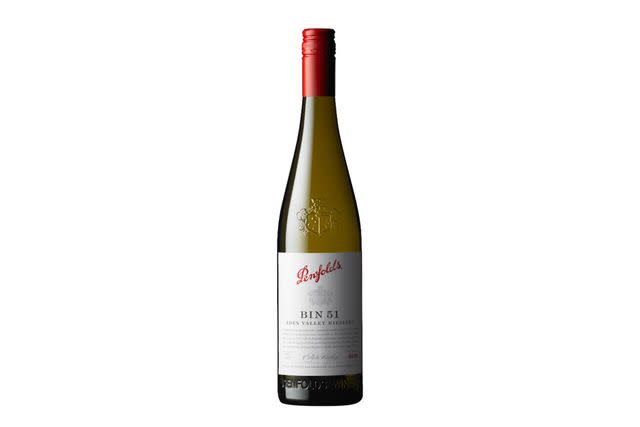
Courtesy of Penfolds
When it comes to everyday wine drinking, riesling can be somewhat polarizing — often thought of as cloying and synonymous with Germany and Austria, it’s one of those varietals that’s just widely misunderstood. If you keep an open mind about the category, it’s worth checking out both Old World and new-age rieslings, and if you’re looking exclusively for dry wines, simply check the label for the word “trocken,” a German term indicating lower sugar content. Australia’s riesling are not to be overlooked — iconic South Australian label Penfolds, a Sustainable Winegrowing Australia member, has garnered countless awards for its mineral-driven Eden Valley varietals, and the 2019 Bin 51 is no exception. Powdery, citrusy, and floral, this dry stainless steel-matured riesling boasts a ripe acidity that’s sure to pair perfectly with just about any shellfish dish out there.
9. Proxies Club x Miguel de Leon “Bamboo”

Courtesy of Proxies
We’d be remiss not to include a good non-alcoholic option on this list — it is 2022 after all, and shaming non-drinkers by way of exclusion is simply not right. New York City sommelier Miguel de Leon is at the forefront of the wine scene, and is among the first of the community’s elite to champion an alcohol-free option in his recent partnership with Proxies Club, which currently offers three sparkling expressions, Fizz, Glow, and Sparkle. It’s the Fizz that caught my attention, closest to a white wine in color and composition and rife with fresh, fruity notes, offset by a slight hit of savoriness leading into its bubbly finish. De Leon’s inspiration for these limited-edition non-alcoholic sparkling wines largely came from his Filipino upbringing, and you’d be hard-pressed to find a spirit-free drink more suited to pairing with international cuisine than this.
10. 2017 Granbazán Albariño Limousin Rias Baixas (Galicia, Spain)
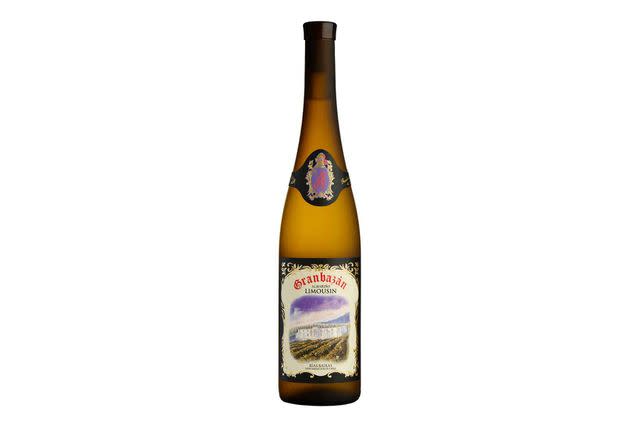
Courtesy of Wine Access
If you haven’t yet fallen for albariño’s irresistible charm, you may be missing out — often found in northern Portugal and Galicia in northwestern Spain, this white grape variety is sometimes likened to sauvignon blanc and riesling but is in an aromatic category entirely its own. Look to classic Spanish producers like Granbazán for traditional interpretations that are anything but boring, like the 2017 Rias Baixas Limousin, an aged wine that showcases the more mature side of Albariño in a way that’s still approachable, making otherwise obscure varietals more accessible to the modern drinker.
11. M’hudi Barrel Fermented Chenin Blanc (Stellenbosch, South Africa)
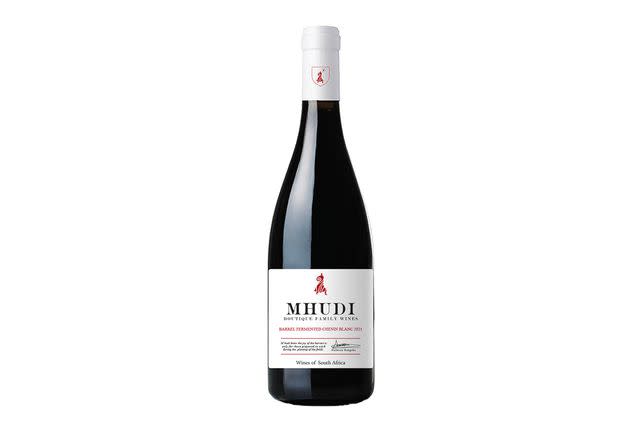
Courtesy of Mhudi Wines
True white wine drinkers should be somewhat familiar with the wines of South Africa’s Western Cape, particularly Stellenbosch, where grape varieties like chenin blanc thrive. Pioneering winemakers like the Rangaka family behind M’Hudi, the first Black-owned wine estate in South Africa, are beacons for the country’s winemaking community — the country has been producing wines for centuries but is still fighting for representation and recognition across the globe, and it’s wineries like this that are helping to move the needle in the international wine scene. M’hudi’s barrel-fermented chenin blanc, a golden-hued gem full of cooked stone fruit notes and fresh quince, is a lovely example of the area’s whites and as good a reason as any to support South Africa’s ever-blossoming wine scene.
12. The Anarchist 2021 White Blend (Clarksburg, California)
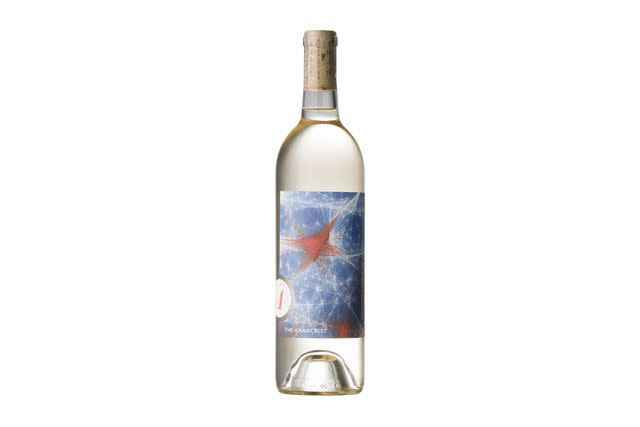
Courtesy of Anarchist Wine Co.
Made up of gewürztraminer, viognier, pinot gris, riesling, sauvignon blanc, and the slightest touch of chardonnay, Anarchist Wine Co.’s 2021 Clarksburg white blend is a dynamic expression of the company’s approach to winemaking, which honors history’s dissenters. This combination of six varietals is a harmonious meeting of the minds, its strong mineral backbone bracing a palate of almost — but not quite — competing fruit notes from citrus to stone fruit and everything in between. At less than $30, this slightly herbaceous white wine is an awesome expression of six different California-grown white grapes coexisting peacefully in one bottle, bucking societal norms as its name suggests.
13. 2019 Perla del Garda Madonna della Scoperta Lugana Superiore (Lombardy, Italy)

Courtesy of Wine-searcher
There are plenty of Italian wine regions that enjoy their share of the spotlight at any given time, but Lake Garda’s Lugana appellation is one that could stand a bit more international attention given its prominence in Italian viticultural history. Lugana, which is located between Verona and the Brescia province, has long been home to wines made from Turbiana, a white grape that’s been cultivated there since before the wine earned its certification in the 1700s. Perla del Garda, a local sustainable producer showcased at this year’s Wine Media Conference at Hotel Acquaviva del Garda on the lake’s southwestern shore, is reason alone to discover the wines of Lugana. My personal favorite is the Madonna della Scoperta 2019 vintage, an incredible value wine at $20 or under that’s reminiscent of verdicchio (the two grapes are genetically linked) yet generally more flint-forward and distinctly its own.
14. Can de la Calle Agave Wine (Jalisco, Mexico)
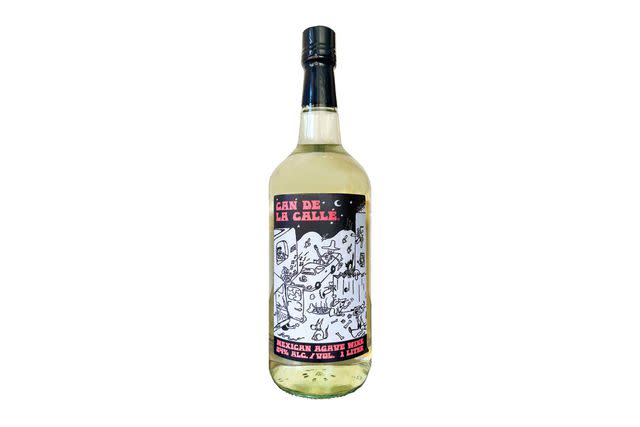
Courtesy of Vinovore Eagle Rock
If you’re on the hunt for something totally different, try this high-quality fortified agave wine by tequilera and winemaker Melly Barajas, whose Jalisco, Mexico, label Can de la Calle is named for the dogs she rescues and raises in her spare time. Vinovore recommends sipping this on its own, on the rocks, or in cocktails, underscoring the versatility of this wine that some describe as a lower-ABV alternative to tequila. Available in a one-liter bottle and typically available for less than $25, Can de la Calle is not only a great value, but a fun conversation starter.
15. Roberto Henriquez 'Super Estrella' Moscatel (Itata Valley, Chile)
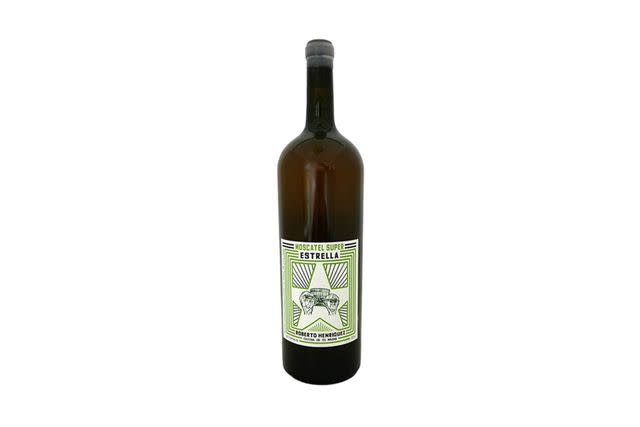
Courtesy of Wine-searcher
Last but not least, a dry muscat by young winemaker and agronomist Roberto Henriquez in Chile’s Itata Valley. I first encountered this wine at Thai hotspot Fish Cheeks in New York City, where it’s featured on the short but sweet by-the-glass list, and have been a fan ever since. Super Estrella is a beautifully aromatic and floral dry white wine, slightly funky and vegetal as a result of Henriquez’s “ancient” approach to winemaking that seeks to preserve the methods and traditions of Chile’s first winemakers. The vines, which he farms himself by hand and animal power, are quite old (some more than 100 and 200 years), so grab a bottle of this unique and delicious Muscat while you can.
For more Travel & Leisure news, make sure to sign up for our newsletter!
Read the original article on Travel & Leisure.

